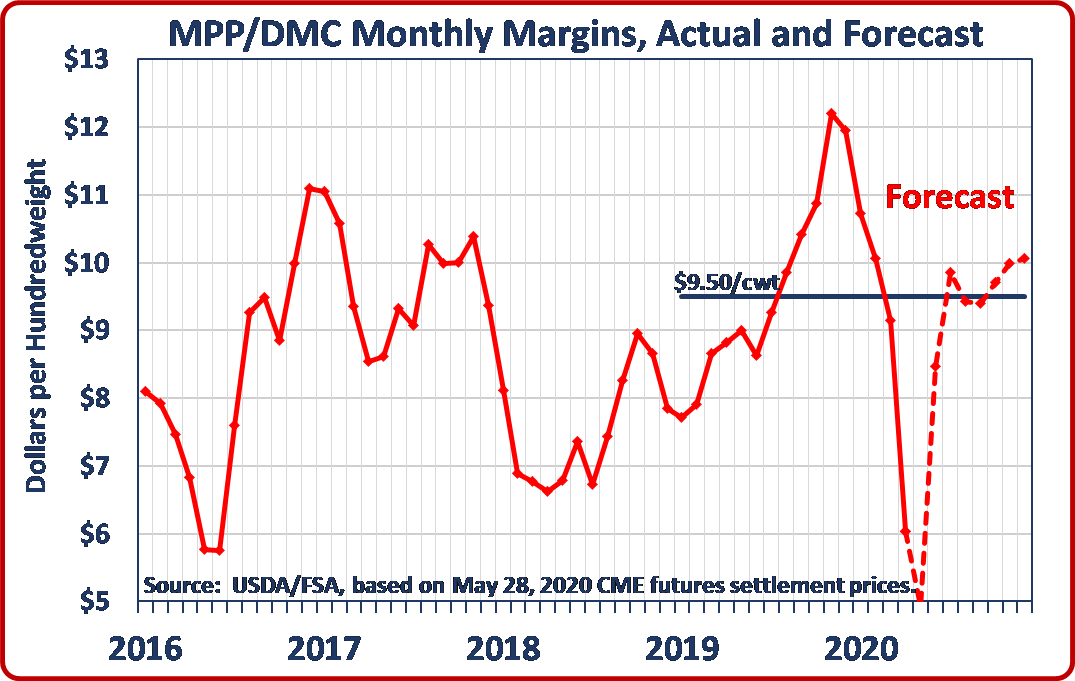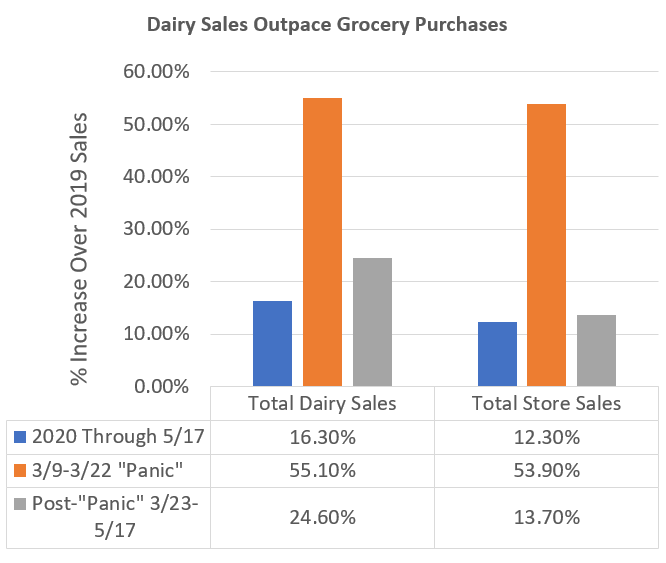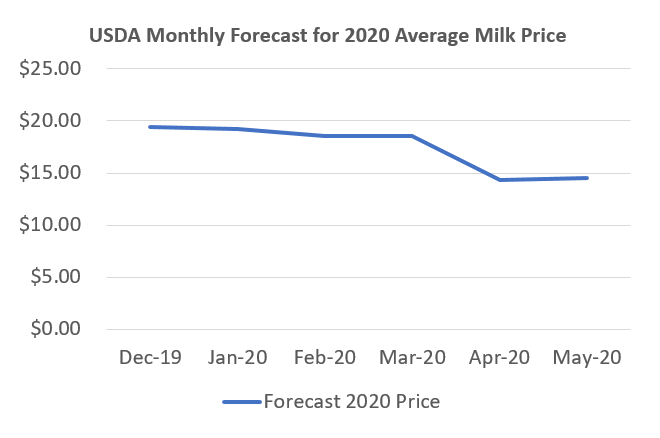Ready or not, here we come.
States across the U.S., in varying degrees of caution, are reopening for business after weeks of severe restrictions caused by the worldwide COVID-19 outbreak. Each phase of each reopening is a milestone of sorts – but of what, we can’t yet be certain.
Will the return to business also bring a resurgence of infections and deaths, leading to another round of lockdowns? Might better summer weather, a greater understanding of effective social distancing, and new therapies make the disease more manageable? Might Americans simply adjust to heightened levels of risk to get back to “business as usual”? Or will “normal” return very slowly with extensive precautions against group gatherings, shopping, dining out and the like?
These are all unknowns. But they will be crucial to the outlook for this nation – and our corner of it, the dairy industry – in coming months.
Economically, the revival of business is obviously good news, especially for milk producers and processors. The sudden loss of foodservice demand that tore a gaping hole in dairy supply chains is slowly being restored. Widespread adoption of base plans by dairy cooperatives has blunted increases in dairy herds and production, helping better align supplies with demand. Large federal purchases of dairy products for much-needed food assistance are now underway.
All of this is helping prices. After crashing to a $1.00 a pound floor in mid-April, cash cheese markets have risen substantially. The futures-based milk price outlook for 2020, meanwhile, has improved by about $1.50 per hundredweight in the past month. Dairy farmers unfortunately still have a few tough months to endure of milk prices that are lower than what they expected before the pandemic struck. But the light at the end of the tunnel appears real, encouraging the resilience that will be necessary to survive this crisis and thrive afterward.
These brighter spots in the dairy economy have been accompanied by meaningful and appreciated relief from the federal government thanks to legislation enacted by Congress and implemented by USDA. At NMPF we have led the producer community’s efforts to achieve this support, and the more than $4 billion infusion of federal assistance we’ve worked to secure will provide helpful relief into our industry. Such support is a credit both to dairy’s importance and the tireless efforts of dairy’s advocates.
USDA purchase announcements have contributed significantly to product-price rallies in recent weeks. The dairy producer direct payments in the Coronavirus Food Assistance Program (CFAP), made possible by the CARES Act, will provide valuable relief. The potential for up to $6.20/cwt. payments on a producer’s Q1 milk production will greatly improve many balance sheets. So will a substantial easing of payment limitations, the cap for which was increased from the initially proposed $125,000 to potentially $750,000 after we and others raised significant concerns.
It’s also important to remember that, although this crisis wasn’t foreseen when the current farm bill was approved in 2018, the new Dairy Margin Coverage program is proving to be a substantial source of relief to many farmers, showing that an initiative created to manage unusual circumstances has done exactly that.
Current projections indicate that the DMC program will pay producers who signed up for maximum coverage of $9.50/cwt. at least through June, after which margins may recover enough to rise above that level. This will provide an additional safety net to those producers in addition to the CFAP assistance they, and all other dairy farmers, will be eligible to receive.
These dairy policy tools we’ve worked to create have been one of several silver linings we’ve witnessed among the clouds hanging over us. Increased retail demand for milk and dairy products that, tellingly, outpace gains in overall grocery-store purchases, show that consumers support our industry’s hard work and nutritious products, despite years of propaganda from our opponents saying otherwise.
Most importantly, the dairy community, despite extreme duress, has not lost its ability to serve the public. Every farmer, every processor, and every dairy employee should be thanked for the essential work provided during these difficult times.
More needs to be done, of course. As spring gives way to summer and economies evolve in response to the pandemic in our midst, we at NMPF will continue to serve our members in any way we can, from advocating for producers on Capitol Hill and in federal agencies to serving as the go-to informational medium for our community.
As the Twitter hashtag reminds us, #dairyneverstops. We’re proud to be part of that, and we know that dairy farmers and the entire industry will remain resilient as America follows its complex path to reopening – wherever that path may lead us.



 But even that story is brightening. A recent price rally is changing the outlook from mortifying to merely difficult – still cold comfort for many producers, but more manageable in a way many wouldn’t have dared to wish for even one month ago. Restaurant sales are slowly returning, and federal aid has provided a meaningful boost to bottom lines, even as signs of stress will still need to be monitored and additional aid will be necessary.
But even that story is brightening. A recent price rally is changing the outlook from mortifying to merely difficult – still cold comfort for many producers, but more manageable in a way many wouldn’t have dared to wish for even one month ago. Restaurant sales are slowly returning, and federal aid has provided a meaningful boost to bottom lines, even as signs of stress will still need to be monitored and additional aid will be necessary.



